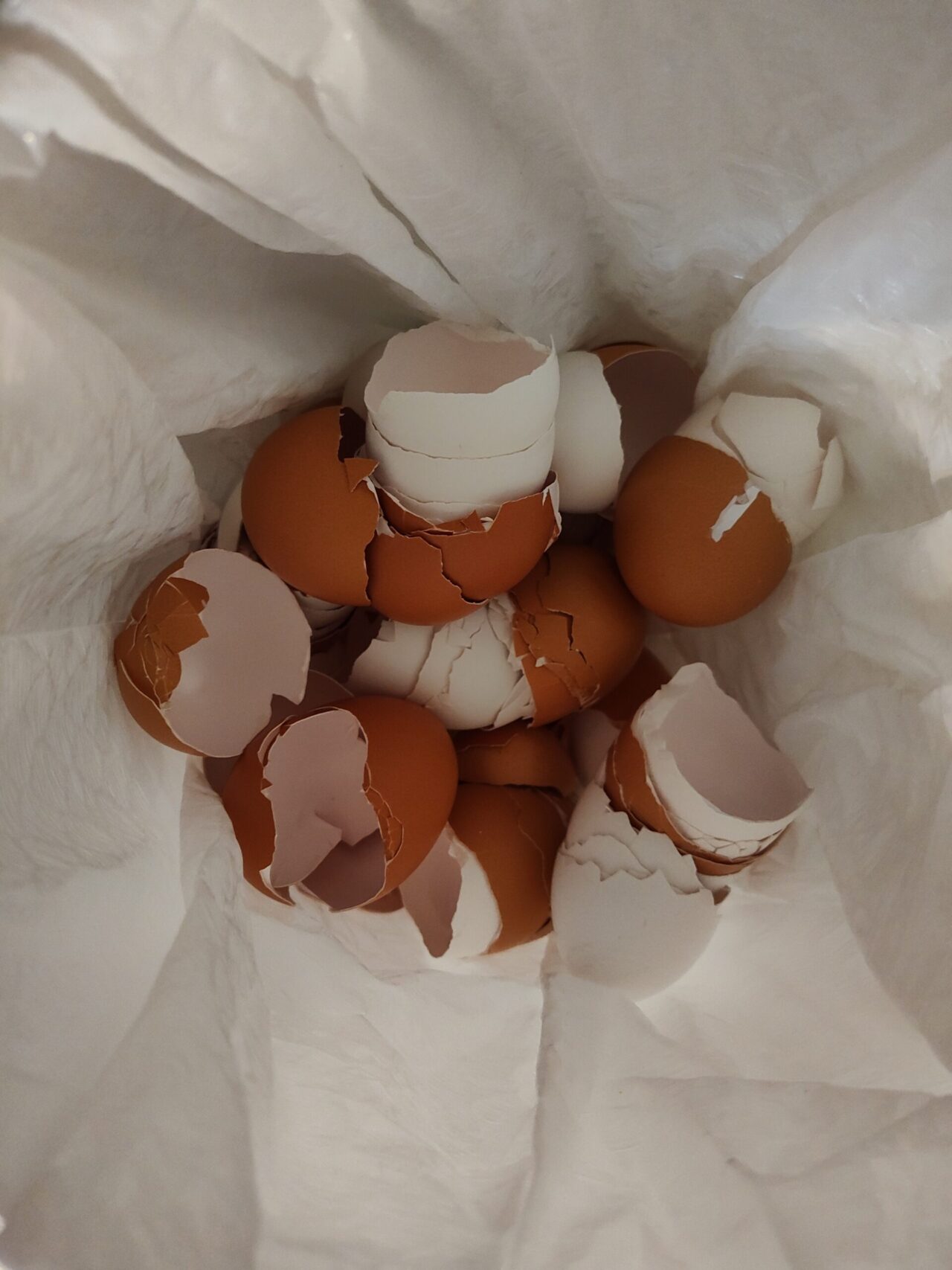I am an anaphylactic egg allergy person. So, in order to live, I have to know what is dangerous for me to eat and drink. In time, you will too. Get a notebook and start your own list of products that are safe for you.
Don’t forget to read the labels and google this question about the additives and preservatives – “Is this (additive/preservative) derived from an egg?”
Don’t accept the typical answer that internet articles gives of, “The label doesn’t reflect eggs in the ingredient list or allergy warning.” That means that the person only analyzed the ingredient listed on the label and didn’t analyze to see if the actual preservative or additive was made with eggs, eggshells, or egg protein powder. The preservatives, such as calcium and lecithin, frequently have eggs in them. FDA requirements for food labeling do not mandate the listing of the ingredients that make up the preservatives and additives for the label. For more information, see my article Is Lecithin Egg-less.
I researched and found this out when I would eat foods that did not list eggs and I would have an allergic reaction. In this article, I will help you decipher the ingredients and hidden eggs in your groceries. If you have unanswered questions that I can help research, please click “Contact” at the bottom of the page and I will email you back.
Discarded eggshells are used in the preservative that fruits and vegetables are soaked in before packaging and sending them to the marketplace. Even if the label states “Pre-washed,” you must rinse the vegetables off! Thank goodness the preservative washes off easily.
That is why a person who is allergic to eggs keeps having reactions even when they think they are not consuming eggs. It is because it is hidden in additives and preservatives etc. The sad news is, manufacturers are not under any obligation to tell you, the consumer, what the additives and preservatives are derived from on the label. So, unless you become serious about reading and understanding food labels, you will continue to be miserable with side effects.
What happens to the monumental amount of discarded eggshells from the manufacturers?
They don’t go to the dump. Manufacturers want zero waste. The discarded eggshells are recycled as preservatives and additives in some food, beverages, and liquors. They are transformed based on the calcium carbonate’s purity in the shell. On the product labels look for the following: calcium carbonate, magnesium carbonate, calcium phosphate, magnesium phosphate, and silicon oxide.
Low-Purity vs. High-Purity Calcium Carbonate
The difference between low-purity and high-purity is the amount of pure calcium that makes up the eggshell. Both are converted to egg powder aka protein powder. They are both equally deadly for anyone with an egg allergy, but they are used differently in the food supply. The high-purity egg has a grade “A” eggshell consisting of 97-100% calcium. The Low-purity egg has a grade “B” eggshell consisting of less than 97% calcium.
Typically it is used in medications and vitamin supplements containing calcium, along with other food and beverage products.
Examples of High-Purity Calcium Carbonate egg powder
- Medications – antibiotic tetracycline aka Doxycycline antibiotic, and Cephalosporin aka Keflex
- Alcoholic Drinks – some beer, wines, tequila
- Products – dairy products, flour and bakery products, bread, cosmetics
- Dental bio-ceramics – bone and dental implants. On a personal note: I had an implant done once that turned out to be calcium-based. The result was constant inflammation and a fever in the gum around the implant. Later, they had to remove it and give me a metal tooth. After that for a visible tooth, they used a ceramic tooth that was not made with calcium bio-engineering and it worked fine.
- Oral Hygiene Products -Anti-tartar toothpaste and mouthwash
Examples of Low-Purity Calcium Carbonate Egg Powder
- Vitamin Supplements that contain calcium
- Coconut milk brands can typically have Tricalcium phosphate in them. Silk brand Coconut Milk does not.
- Ice cream
- Medicines and vitamin supplements.
- Some alcoholic beverages, such as wines, beers, and tequila *
- Calcium carbonate – in dairy products, flour and bakery products, bread, cosmetics, and medical industry. It is used as the base material for bio-ceramics,
- Calcium Salts – calcium oxide, calcium hydroxide, calcium citrate, calcium lactates, gluconate
- Calcium Phosphates – calcium citrate, calcium acetate, Dicalcium phosphate dihydrate, Monocalcium phosphate monohydrate, Tricalcium phosphate
Medications Made From Eggs and Egg Protein Powders
- Neuromuscular blocking agents (NMBAs) and antibiotics are the most common drugs that trigger anaphylaxis.
- Doxycycline is a tetracycline antibiotic. Formulations include hyalite, monohydrate, and calcium salts. So YES, It is derived from EGGS.
- Sulfonamides from chicken eggs. – The process includes a supercritical fluid extraction (SFE) method described for isolating sulfonamides from chicken eggs.
Vaccines from Hens Eggs
Influenza vaccine antigens are prepared in chicken eggs, the Yellow Fever vaccine contains egg protein, and the Rabies vaccine is grown in chick embryo fibroblast cultures.
Intravenous Anesthetic – Propofol
Propofol is an intravenous anesthetic widely used in surgeries for the induction and maintenance of anesthesia as well as for endoscopic and pediatric sedation. Propofol contains purified egg lecithin. Resource (NIH)
It is important to know that Propofol is a fat emulsion containing soybean oil, and purified egg lecithin (phosphor-lipids derived from egg yolk). It is important to note that physicians may consider avoiding propofol in patients with a history of egg anaphylaxis. This is according to the Childhood Allergy Committee of the Spanish Society of Allergy and Clinical Immunology, who recommend an alternate drug or test dose and only with trained personnel who can recognize and treat anaphylaxis.
I know this all sounds scary as there is so much saturation of eggs in the food and medical industries. That is why you are seeking knowledge now. Keep up your diligence and check back at my site from time to time as I am always seeking to find the truth and will continue to research and write these articles. This research has helped me to lead a much better and safer life. I am an anaphylactic egg allergy person. So, in order to live, I have to know what is dangerous for me to eat and drink. In time you will too. Get a notebook and start your own list of products that are safe for you. Don’t forget to read the labels and google this question about the additives – “Is this (additive) derived from an egg?” Don’t accept the typical answer that internet articles gives of, “The label doesn’t show eggs.” That means that the person only analyzed the ingredient listed on the label and didn’t analyze to see if the actual preservative or additive was made with eggs, eggshells, or egg protein powder.
I know this all sounds scary as there is so much saturation of eggs in the food and medical industries. That is why you are seeking knowledge now. Keep up your diligence and check back at my site from time to time as I am always seeking to find the truth and will continue to research and write these articles. This research has helped me to lead a much better and safer life.
If you have unanswered questions that I can help research, please click “Contact” at the bottom of the page and I will email you back.
Thanks for visiting, come back soon!


